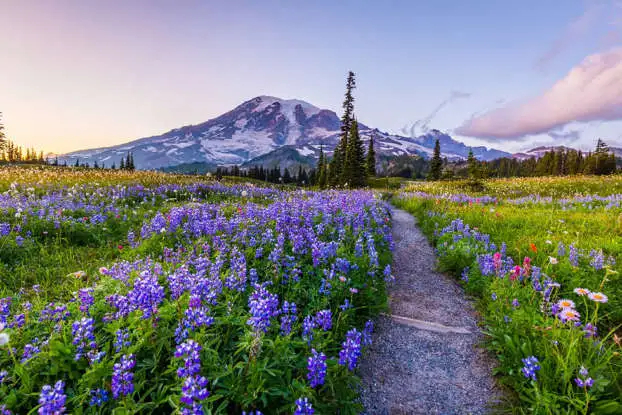How far will you go for an adventure? What are your thoughts on being 16,404.2 feet above sea level? Is it exciting or intimidating? Mountain climbing is considered an extreme sport. It trains not only your limbs, but also your intellect. However, it can be extremely harmful, even deadly.
Mountain Climbing
As we all know, this hazard attracts a large number of people to the mountains each year. What better way to toughen up than to reach the ice cap! Nothing surpasses the view from a summit, according to mountaineers, but are you willing to go to any length to get a good viewing spot? Whether the idea of danger fascinates or scares you, we felt you should know which mountains in the United States are the deadliest. These mountains provide the most severe climbs.
Mount Rainier, Washington
Mount Rainier ranks first on numerous lists of the deadliest mountains in the United States. Its local name is Tahoma or Tacoma. The mountain stays frozen all year. While it is not prone to volcanoes, frequent earthquakes do occur. This peak is one of the most difficult to climb since it is prone to avalanches. Climbers frequently encounter vast sections of treacherous ice sheets. Over 400 climbers have lost their footing on Mount Rainier. It is 14,409.5 feet above sea level.
Mount Washington, New Hampshire

If you believe the weather is unpredictable, the climate on the mountainside is even more so. Mount Washington is one of the most dangerous mountains due to the severe winds that buffet it and the daring climbers who attempt to scale it. With a peak elevation of only 6,286.1 feet above sea level, it may appear to be an easy assignment. Many climbers have died as a result of the unstable weather. The mountain's shape and slope attract winds and favor storms. It does not help that the hill is located just east of the Mississippi. Mount Washington recorded the highest wind speed known to man.
Half Dome, California
The Half Dome is an unusually formed rock. One side of the stone is nearly perfectly round, while the other is entirely flat. The Half Dome derives its name from its distinctive shape.
The curved side of Half Dome is not totally circular, but rather has a characteristic prolate spheroid shape that is immediately identifiable. The rock's vertical face is almost impossible to climb and extremely dangerous. The curved side is not without dangers. The Half Dome is steep, with an angle ranging between 113 and 140 degrees.You may also read this: Plan the Ultimate Road Trip for Scotland
Mount San Antonio, California
Mount San Antonio, often known as Mount Baldy or Old Baldy, is one of the most demanding climbs in the United States. Mount San Antonio is roughly 10,068.9 feet above sea level. This summit is virtually constantly covered in ice, even during the warmer months. Hikers should be cautious of natural disasters such as avalanches. Mt. San Antonio may not have erupted in the last two decades, but it is not dormant volcano. Over time, changing tectonic plates have cooled the magma beneath this mount. Colorado contains 53 fourteeners (mountains higher than 14,000 feet), more than any other state in the US. The term "Knife Edge" refers to a ridge, not a pass, with fall of around 2,000 feet.

Climbers must keep an eye out for the trail's natural hazards. People die as a result of dehydration and malnutrition after getting lost. Before embarking on a hike, be sure you are safe and prepared. Furthermore, Mount San Antonio does not remain frozen all year; snowfall occurs mostly during the winter and shoulder seasons. Avalanches are not a major worry when the weather is warm because most people try to reach the peak at that time. Furthermore, it's worth noting that Mount San Antonio is not a volcano.
Capitol Peak, Colorado
Capitol Peak is the most difficult of America's 58 summits to climb. The trail is difficult to navigate, and a boulder or two frequently becomes loose. The most interesting (and dangerous) section of this trip is the Knife Edge Pass. The Knife Edge trail is 150 feet long and very thin. A 6,561.7-foot drop may be found on each side of this trail. As you could expect, it would be terrifying. You can combat nausea by walking the track on all fours.
Longs Peak, Colorado
Longs Peak is the Rocky Mountains' northernmost fourteener and one of the most dangerous to climb. The peak is roughly 14,259 feet above sea level. Mount Meeker, another mountain with a little lower summit, is not far distant. These two mountain peaks are frequently referred to as Twin Peaks. Unlike Longs Peak, Mount Meeker is not a fourteener. Like Half Dome, Longs Peak has two faces. Its northern side resembles a diamond: exceedingly steep, with jagged rocks that are difficult to climb. The other face is rough and jagged, like a beaver. There are several routes to the summit of Longs Peak. The Casual way is the easiest way.

